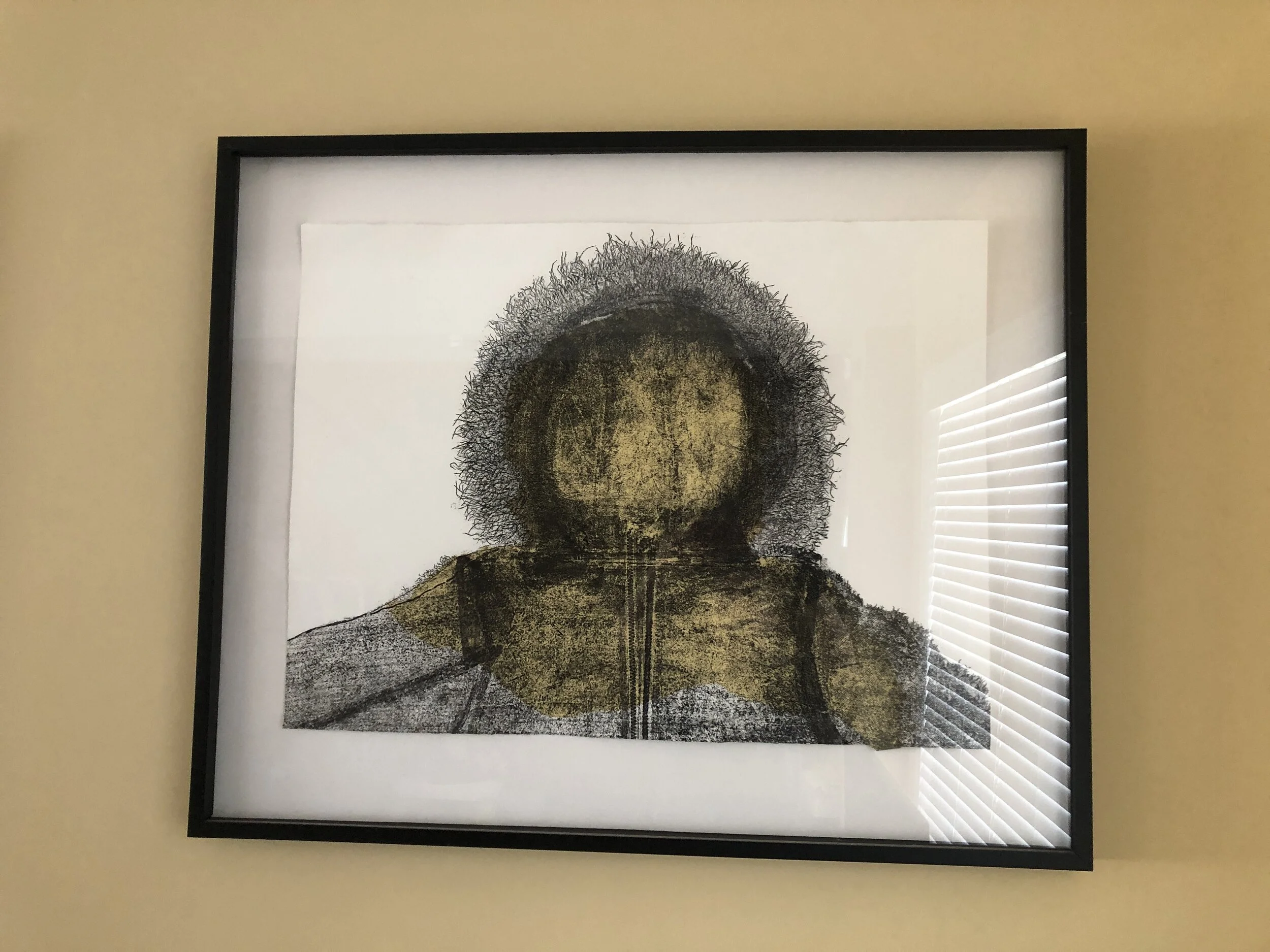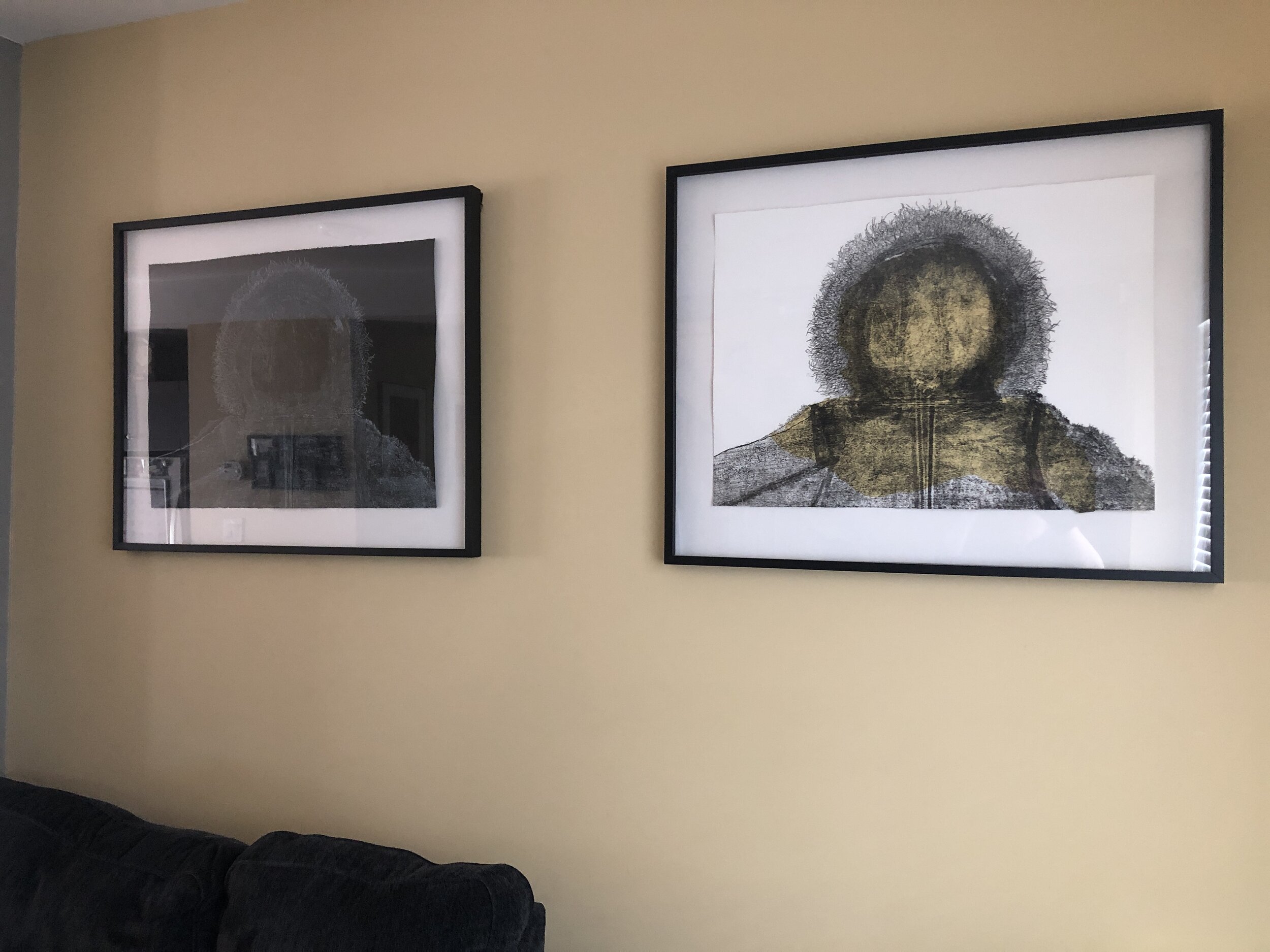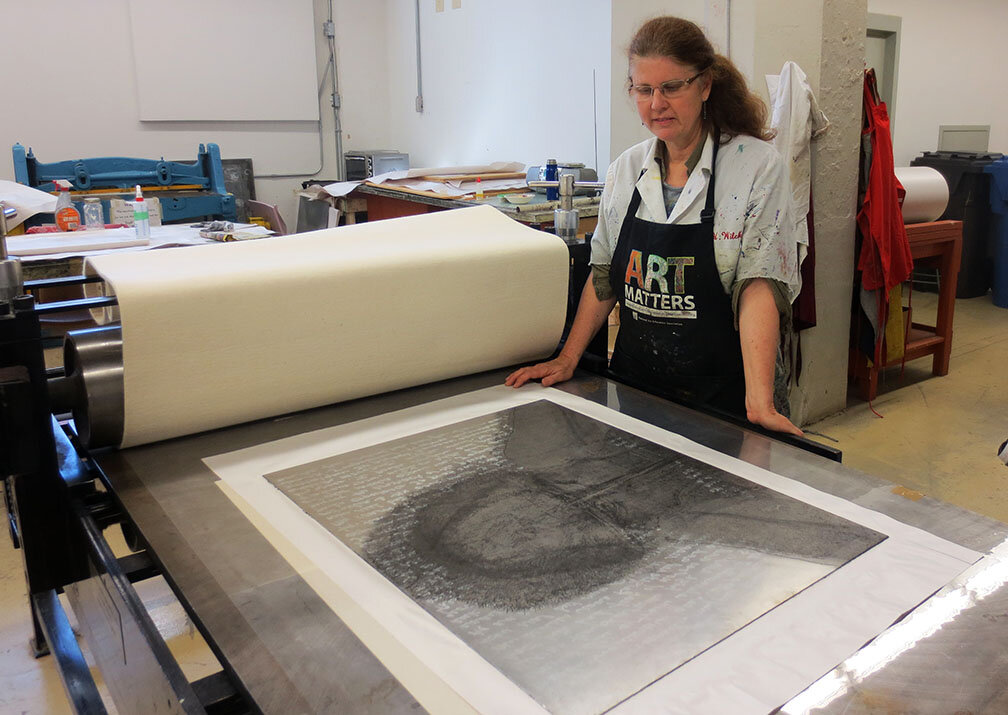Seeing White VE 1/10 - Soft Ground Etching
Seeing White VE 1/10 - Soft Ground Etching
About the Work:
When I went to Ulukhahtok in the High Arctic, the only directive I received was to bring a parka. The inspiration for this piece was this parka.
The parka confines and protects. It limited my vision, constricted my movements and muffled sounds, yet it was mandatory survival gear. I experienced -59 Celsius temperatures, high winds, snow fog, fear of frostbite, and fear of wolves and polar bears. My senses were both heightened and dulled; the dangers were real while my physical response was altered.
As an outsider to this environment, I had a keen awareness of my parka experience. I was small in a big space, vulnerable in the face of danger, seeing the world as white on white with no familiar reference points.
This soft ground etching is on a piece of 100% rag Somerset printmaking paper 22x30in. The image bleeds off all four deckled edges of the paper. It will be shipped in a tube to your address unless you live in Winnipeg and it can be hand-delivered or picked up.
Follow my art adventure on Instagram @cornelius.karen
Karen Cornelius holds the Copyright on all her artwork. No image may be reproduced for any reason without the consent of the artist.
Checking the soft ground etching plate before printing
How It Was Made:
Etching is an original printmaking process using acid or a mordant to cut into the unprotected parts of a metal surface to create a design.
In this work, I transferred actual parkas onto the aluminum plate using a soft ground of asphaltum, beeswax and rosin. The soft ground remains soft, pliable and sensitive to pressure allowing textured materials to be pressed into the surface. When the textured material which in this case was a parka is carefully removed from the plate an impression consistent with the clothing is exposed. The ground must be hardened on the metal plate before being etched. I used a less toxic mordant of copper sulfate and salt to etch the aluminum plates for this series.
Once the resist is removed, the plate is inked and wiped by hand pushing ink into every line and texture, then wiping the excess off the surface. The inked image is transferred onto paper by running the plate topped with a piece of rag paper between a steel roller and a steel bed of a hand-driven etching press.




